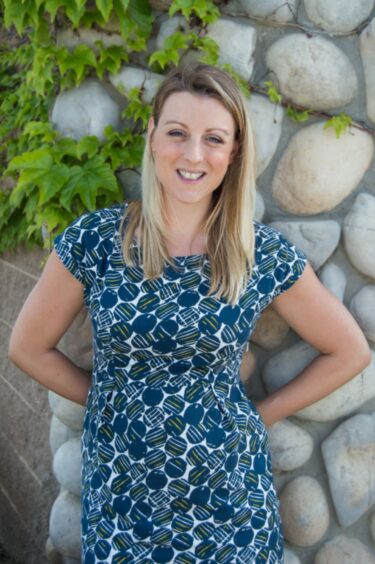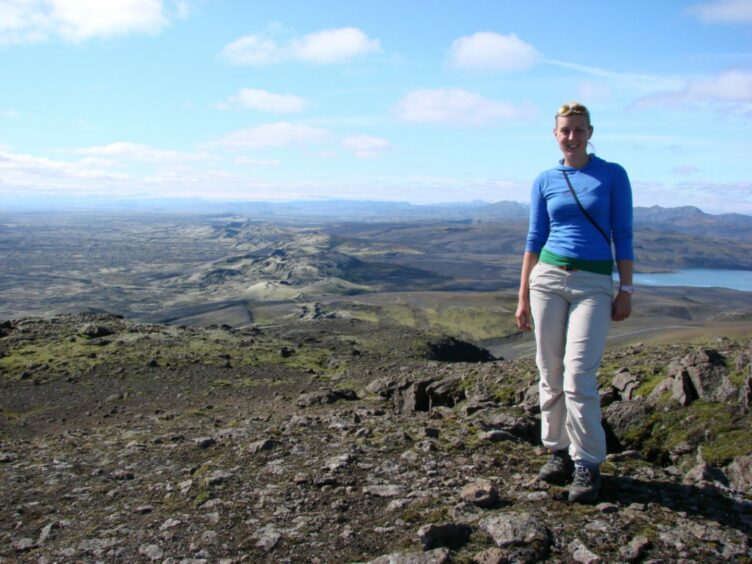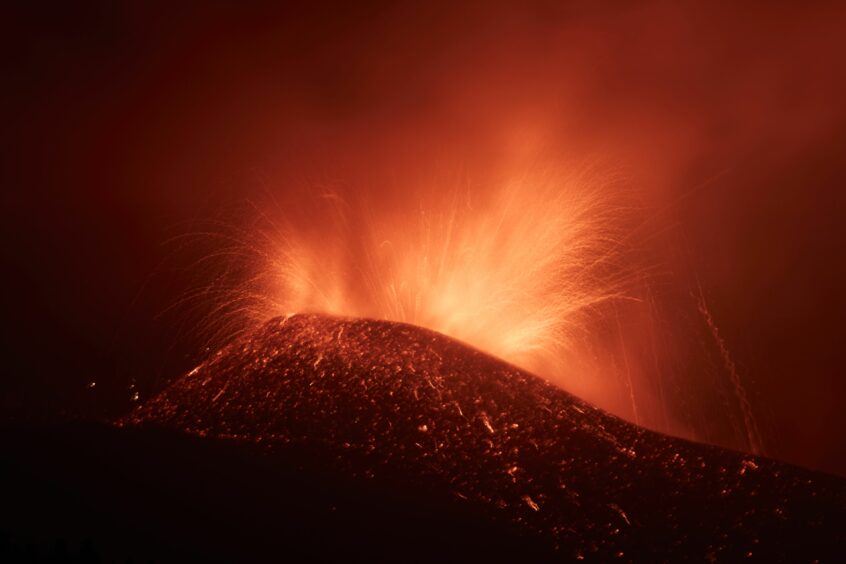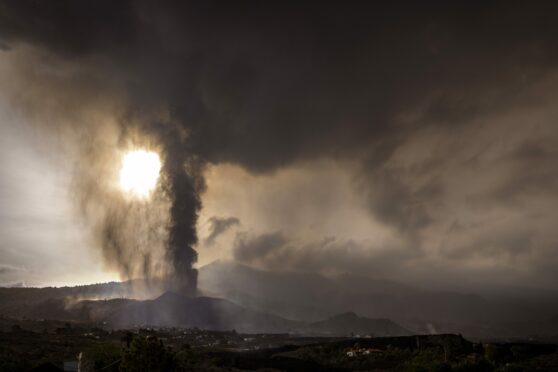
Her university years were spent travelling millions of years back in time exploring Scotland’s ancient volcanoes.
Since then, she has studied them in the Icelandic wilderness and witnessed their awesome force up close on the Caribbean island of Montserrat.
Now Natalie Starkey has gone a bit further – outer space. Her book, Fire And Ice: The Volcanoes Of The Solar System, reveals astonishing galactic contrasts, from volcanoes that erupt the hottest lavas imaginable to others on Pluto spewing out an icy sludge.
And the geologist says these recently discovered distant wonders can help tell us of Earth’s origins and may share the same lifeforms we have still barely discovered on our own planet.
She has had a love of fascination ever since primary school.
“We had a lesson on volcanoes when I was in year six and I’ve loved them since then,” said Starkey, 38. “At high school I learned about Katia and Maurice Krafft, who had taken almost all of the amazing images of lava exploding or an ash cloud hurtling down a mountain.
“Before then not many people had been brave enough to get close and I was inspired by how they were first on the scene of an eruption.
“But they weren’t just there for the spectacle, they were always looking at it from a scientific background of how to predict eruptions in the future.
“Tragically, even with all their knowledge, they were among 43 people killed in a massive eruption on Mount Unzen in Japan in 1991. It shows just how dangerous volcanoes are and, however much we think we understand them, they are beasts we can’t control.”
The Edinburgh University graduate’s first experience of an active volcano was on a field trip to Mount Teide in Tenerife when she was 18 and clambering over the lava flows further fired her passion. She studied geology in Durham before moving to Edinburgh in 2005.
“The past was right on my doorstep with a 340-million-year-old volcano of Arthur’s Seat,” she said. “Scotland has the most amazing volcanic history and my PhD project was actually looking at something called the Proto-Iceland Plume.
“Today it’s under Iceland where you get a huge number of volcanoes because of the hot chimney of rock rising up through the earth. That plume first started erupting on land 60 million years ago when Scotland was still joined to Canada. They drifted apart but you can go to many places on the west coast and study the same volcanic geology that exists in places such as Baffin Island in Canadan.”
She led trips throughout Scotland and Iceland and spent three months as a volcanologist on Montserrat. The island is one of the world’s most active volcanic regions, with a massive eruption from the Soufriere Hills volcano in 1997 killing 19 people.
Thankfully the capital Plymouth had been evacuated in 1995, but it was completely buried. Starkey was able to get a close-up view of the volcano during her stay.
“I don’t consider myself a risk-taker but obviously I am when it comes to volcanoes,” she said. “You really don’t appreciate the power until you are standing there. It’s incredibly noisy, roaring with all these gases escaping.
“I trusted in the team back at the observatory monitoring the seismic data and saying it looked safe, but you just never know.
“And when you see three-storey buildings in Plymouth submerged under ash, it’s quite eerie. Scientists may go back one day and uncover this once-bustling Caribbean town just like Pompeii.”
Her fascination with space began after work she did in Edinburgh led to a post with the Open University analysing comets and asteroids.
She went on to write popular science book Catching Stardust in 2018 and the new love of space science resulted in Fire And Ice.
Much of what we know about volcanic activity in space has come about thanks to the two Voyager space probes launched by Nasa in the summer of 1977. Whilst Mars has a very visible volcano, Olympus Mons, distant finds around Jupiter, Saturn, Uranus and Neptune have most fascinated Starkey.
“What we have learned, even from just fleeting fly-bys, is phenomenal,” she said. “Images from some of the small moons have been amazing.
“There’s a moon of Neptune called Triton which is volcanic even though it’s frozen solid. We thought it would be a dead world like our moon, but it couldn’t be more different. We never thought we would get an ice volcano out there.”
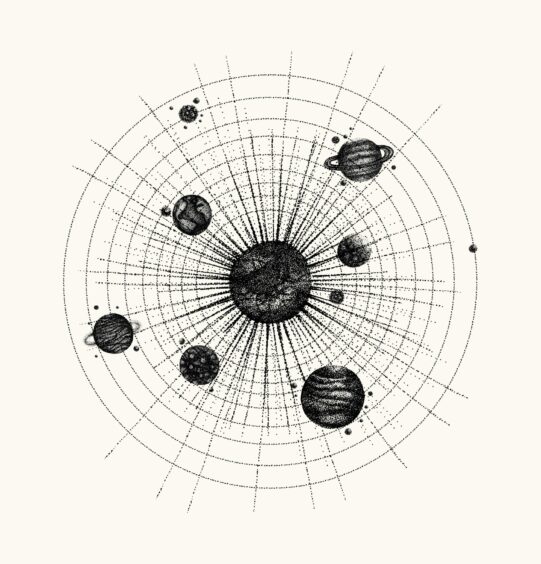
Although volcanoes on Earth are thought of as conical-shaped mountains exploding lava, it’s far from the same in space.
“When you go out into the solar system, we might actually be the weird one,” she said. “We have volcanoes that aren’t like those anywhere else on the moons around the outer planets.
“We know that Enceladus, the moon of Saturn, is spewing out a plume of material into space that comes from the ocean under the icy outer crust.
“That’s volcanic activity as it’s being fuelled by heat from within its core and one of Saturn’s rings is produced by Enceladus.”
Jupiter’s rocky moon Io is the most volcanically active object, producing the hottest lava in the solar system and Voyager saw numerous eruptions as it passed by. It’s thought to be like Earth was four billion years ago and gives an insight into what our planet looked like soon after its foundation.
“Knowing there are so many active worlds makes the possibility of there being life out there very exciting,” she said. “We always look at Mars when we think about life elsewhere as it had a very similar environment to Earth in the present day. It had liquid water and an atmosphere and you probably need a warm rocky core for that, which we now know exists on Enceladus and Jupiter’s moon Europa.
“That has a huge ocean and conditions at the base of it are very similar to what you’d find deep in the middle of the Atlantic where magma comes up from the centre of the Earth. That’s where we think life started here billions of years ago and the same is probably happening on these volcanic moons. We’ve hardly explored our own mid-ocean ridges, so the problem would be how we’d actually be able to go there and find out for sure.”
The danger beneath
The deadly dangers of volcanoes were brought home with the eruption of the Whakaari volcano on White Island in New Zealand in December 2019.
The island attracted around 10,000 tourists a year and, despite scientists raising the alert level, there were 47 visitors there at the time, 22 of whom were killed.
“Volcanoes are always going to erupt on this planet,” said Natalie Starkey. “The areas around them tend to be very lush and good for crop-growing, so populations will live there.
“If the volcano hasn’t erupted for a human lifetime, people are quick to forget what would happen if it were to blow its top in a big way.
“Scientists are getting really good at forecasting when they might erupt but we can’t be exact and we don’t always get it right. If one doesn’t erupt when we say, people lose trust if they’ve moved for what they see as no good reason.
“And the tourism industry has an important part to play in educating people of the dangers. People need to realise when it isn’t safe. Volcanoes will still cause deaths.”
Island’s shock, awe and terror
The awesome power of volcanoes was brought home with the eruption last week of the Cumbre Vieja volcano on La Palma in the Canary Islands.
Thousands of people had to be evacuated and at least 100 homes were destroyed by a 15-metre-high lava flow.
Fortunately, warnings prevented a tragedy on the scale of the eruption of Whakaari on White Island in New Zealand in 2019.
The island attracted around 10,000 tourists a year and, despite scientists raising the alert level, there were 47 visitors there at the time, 22 of whom were killed.
“Volcanoes are always going to erupt on this planet and they will cause deaths,” said Natalie Starkey.
“Scientists are getting really good at forecasting when they might erupt but we can’t be exact and we don’t always get it right.
“If one doesn’t erupt when we say, people can lose trust and it had been 50 years since an eruption on Cumbre Vieja but it was fortunate that the evacuation warnings were in time and were heeded.
“It’s what is called a fissure-style eruption with lava spraying out from cracks at the top of the volcano. So, you don’t get many months of warnings that you might get if one massively blows its top.
“But it was being watched and the ground actually rose by about six inches with the magma pushing up and there were thousands of mini earthquakes, which helped trigger the warnings.
“The tourism industry has an important part to play in educating people of the dangers,” said Starkey. “People need to realise when it isn’t safe.”
Fire And Ice: The Volcanoes Of The Solar System, published on Thursday by Bloomsbury Sigma

Enjoy the convenience of having The Sunday Post delivered as a digital ePaper straight to your smartphone, tablet or computer.
Subscribe for only £5.49 a month and enjoy all the benefits of the printed paper as a digital replica.
Subscribe